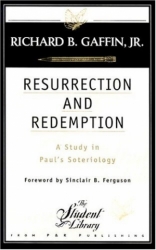A Brief Book Summary from Books At a Glance
by Steve West
Part One: Methodological Considerations
Geerhardus Vos’s Pauline Eschatology is very valuable for its methodological significance and hermeneutical approach to reading Paul. Vos believes that Paul was a great theological thinker and the father of Christian eschatology. He sees Paul as initiating theological reflection on eschatology, and subsequent theologians share in that endeavor. Kuyper, on the other hand, does not speak of “biblical theology” because he believes that Scripture underlies theology; it itself is not theology. For Kuyper, the biblical writers cannot be theologians since theology has to be based on dogma and Scripture. He puts the emphasis on discontinuity in the historical sequence of Scripture, church, dogma, theology. It seems that Paul is expounding the history of redemption with Christ’s death and resurrection as its climax. Like subsequent theologians, Paul stands looking back on the cross and resurrection, and looking forward to the return of Christ.
Interpreters today stand in the same era of salvation history as Paul did. Paul wrote Scripture that was dogma, and as he reflected he did so theologically. His writings are Scripture and theology together. Scripture itself, therefore, is at points theological. Paul is a theologian, and subsequent theologians stand in continuity with his enterprise. Biblical theology and systematic theology cannot be divorced illegitimately. If Paul’s letters reveal a structure of thought, then we should articulate that with theology that is exegetically based. Scripture is not merely a reservoir of content for theology—it also gives us our theological method. Paul can be hard to interpret because he is a theologian of genius who is writing occasional letters. The theology we see is like the tip of the iceberg of his systematic thinking. Interpreting Paul requires the utmost care in paying attention to his underlying structure. Paul as a theologian had as his main interest the explication of the history of redemption. . . .
[To continue reading this summary, please see below....]The remainder of this article is premium content. Become a member to continue reading.
Already have an account? Sign In
Buy the books

RESURRECTION AND REDEMPTION: A STUDY IN PAUL’S SOTERIOLOGY, by Richard B. Gaffin, Jr.